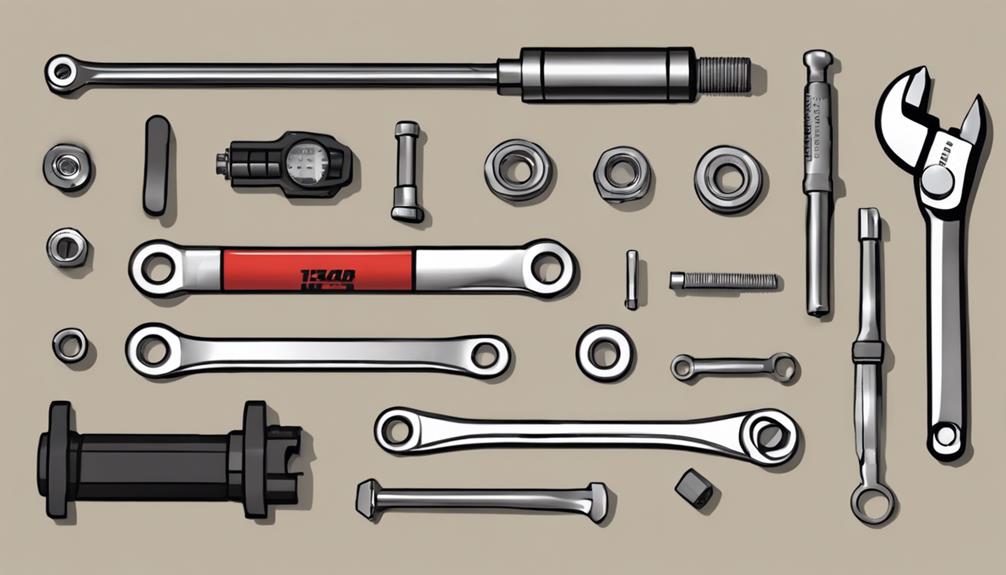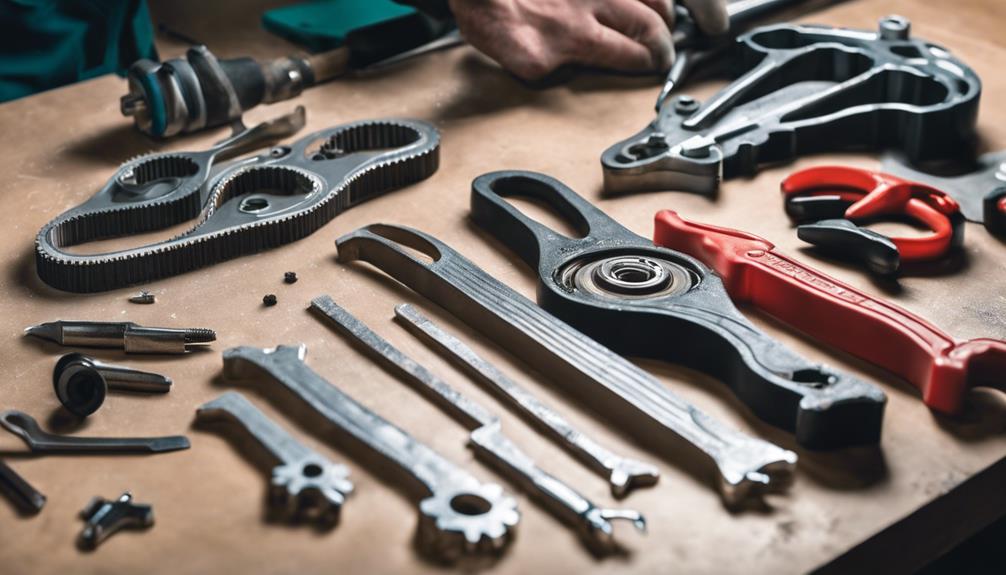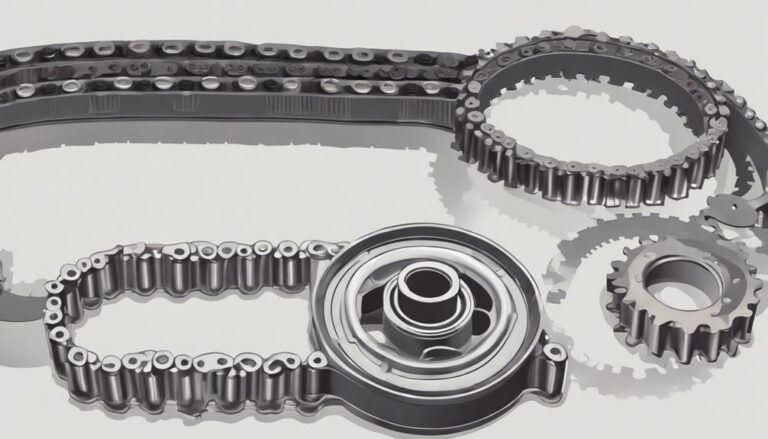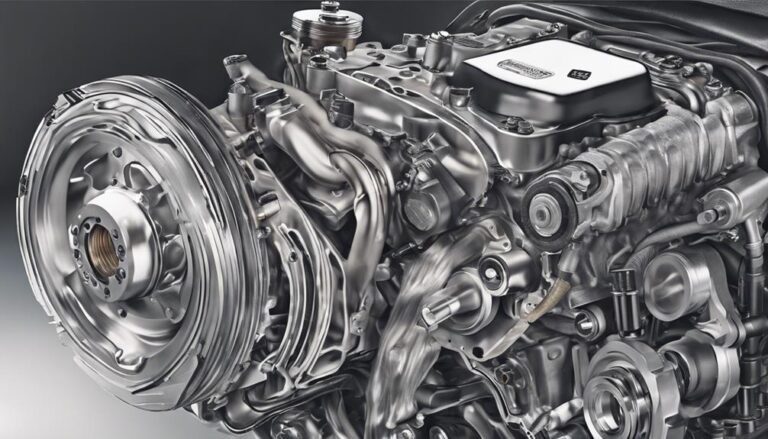Affordable Timing Belt Repair Options: A Step-by-Step Guide
When it comes to timing belt repairs, remember the saying, 'A stitch in time saves nine.'
Before you set out on the journey of fixing your timing belt, there are crucial considerations to ponder. From the tools needed to the step-by-step process, making the right choice between DIY and professional services can be daunting.
But fear not, as this guide will navigate you through the realm of affordable timing belt repair options with precision and clarity, ensuring your vehicle's longevity and performance.
Key Takeaways
- Explore aftermarket kits and local mechanics for budget-friendly timing belt repairs.
- Utilize online resources and compare prices to save on labor costs.
- Optimize repair budget by bundling tasks and considering aftermarket parts.
- Ensure accurate alignment and tensioning for successful DIY timing belt replacement.
Cost-Saving Timing Belt Repair Methods
To save costs on timing belt repairs, consider exploring aftermarket timing belt kits as a quality yet budget-friendly option. Budget-friendly maintenance tips can include opting for aftermarket kits that offer a more cost-effective repair solution compared to original equipment manufacturer (OEM) parts. These kits often come with all the necessary components for a complete timing belt replacement at a fraction of the cost.
By looking for local mechanics or independent shops that provide competitive pricing for timing belt repairs, you can further reduce expenses. Comparing prices and services from multiple repair shops is crucial in finding the most affordable option. Some shops may offer discounts, promotions, or coupons that can significantly lower the overall cost of timing belt replacement. Additionally, exploring online resources and forums for DIY tips and tricks can help save on labor costs.
With these cost-saving methods in mind, you can effectively maintain your vehicle's timing belt without breaking the bank.
DIY Timing Belt Replacement Steps
Consider equipping yourself with the necessary tools like a socket set, torque wrench, and screwdrivers for a successful DIY timing belt replacement. To ensure a smooth process and optimal engine performance, pay close attention to the following steps:
- Proper Timing Belt Alignment: Follow the manufacturer's guidelines meticulously to align the timing marks accurately. Even a slight misalignment can lead to severe engine damage, so take your time and double-check the alignment before proceeding.
- Timing Belt Tensioning Tips: Properly tensioning the new timing belt is crucial to prevent issues such as slippage or misalignment in the engine. Use a tension gauge to achieve the recommended tension levels as specified in the manufacturer's instructions.
- Component Inspection and Replacement: While replacing the timing belt, take the opportunity to inspect other components like the tensioner pulley or distributor belt cover. If any parts show signs of wear or damage, replace them to prevent future issues and ensure the longevity of your repair.
Essential Tools for Budget Timing Belt Repair

What basic tools are essential for a budget-friendly timing belt repair?
When aiming to keep costs low while performing a timing belt repair, it's crucial to have the right tools on hand. Budget-friendly tool recommendations include a set of socket wrenches, screwdrivers, and combination wrenches. These basic tools are commonly used in automotive repairs and are essential for tasks like removing bolts and fasteners during the timing belt replacement process.
While specialized tools like a torque wrench can be beneficial for precise tightening, they may not be necessary for a simple timing belt swap.
In addition to the basic tools, having a jack and jack stands is vital for safely elevating the vehicle and providing the necessary clearance to work on the timing belt. By using affordable tools that get the job done without compromising quality, you can effectively manage the overall cost of the timing belt repair. Building an essential equipment checklist with budget-friendly tools ensures that you have everything you need to complete the repair efficiently and cost-effectively.
10 Affordable Timing Belt Repair Steps
When tackling affordable timing belt repair, the first step is to assess the condition of the existing timing belt and identify any signs of wear or damage. This initial evaluation will help you determine the extent of the repair needed and inform your budget-friendly maintenance approach.
Consider the following steps to effectively manage the repair process:
- Inspect for Wear and Damage: Thoroughly examine the timing belt for any visible signs of wear, such as cracks, fraying, or missing teeth. Identifying issues early can prevent further damage and costly repairs down the line.
- Opt for Aftermarket Parts: Explore affordable repair strategies by considering aftermarket parts as a cost-effective alternative to original equipment manufacturer (OEM) components. Aftermarket parts can offer quality and performance while being lighter on your wallet.
- Combine Maintenance Tasks: Maximize cost savings by bundling your timing belt replacement with other scheduled maintenance tasks, such as water pump replacement or fluid changes. This approach can reduce labor costs and optimize your repair budget efficiently.
Efficient Timing Belt Replacement Techniques

Efficiently replacing a timing belt requires precise alignment of timing marks and proper tension adjustment for optimal performance. To start, ensure the timing marks on the camshaft and crankshaft are aligned correctly before removing the old belt. Expert tip: Use paint or markers to highlight these marks for easier reference during installation.
Loosen the tension adjustment bolts to eliminate slack in the new belt, and rotate the crankshaft to confirm the belt is appropriately tensioned. Quick fix: If the tension feels off, readjust and recheck the alignment. Remember to replace worn-out components like the tensioner pulley to prevent future issues.
When installing the new belt, take care to fit it snugly over all the pulleys, following the manufacturer's guidelines. Expert tip: Double-check the alignment and tension after installation to ensure a smooth operation. By following these expert tips and quick fixes, you can efficiently replace your timing belt with confidence and precision.
Frequently Asked Questions
What Are the Steps to Replacing a Timing Belt?
When replacing a timing belt, align marks precisely, use a torque wrench for tension, inspect and change damaged pulleys, reassemble components carefully, and test for synchronization and leaks. Ensure proper function post-repair.
Can You Fix a Timing Belt Yourself?
Sure, you can fix a timing belt yourself if you've got the right timing belt tools and DIY know-how. But remember, precision is key to avoid costly engine damage. Proceed with caution and attention to detail.
What Else Can You Replace a Timing Belt With?
You can replace a timing belt with an alternator replacement or upgrade to a serpentine belt. These options can enhance performance and reliability. Consult your mechanic or vehicle manual for compatible alternatives. Consider full kits for comprehensive replacements.
How Much Should a Timing Belt Replacement Cost?
Replacing a timing belt generally costs between $500 and $1000, varying by car. Labor expenses are significant. OEM belts are pricier but offer better quality. Additional parts like the water pump may need replacement, raising costs.
Conclusion
You've now unlocked the key to affordable timing belt repair. Just like a well-oiled machine, your car needs proper maintenance to run smoothly. By following the steps outlined in this guide, you can ensure your engine stays in sync and avoid costly repairs down the road.
Remember, a small investment in timely belt replacement can save you from major headaches in the future. Keep your engine ticking like clockwork with these budget-friendly repair options.







